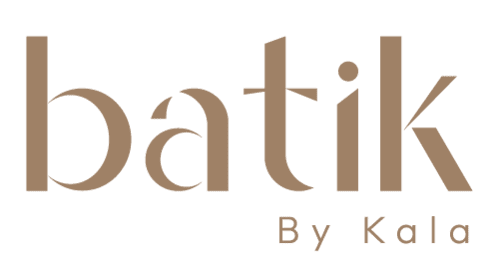Can a single fabric capture the soul of a nation? For decades, the vibrant artistic expression of Malaysian batik has woven together history, culture, and identity. This wax-resist dyeing technique transforms plain cloth into intricate masterpieces, each telling a unique story.
Since gaining recognition as national attire in 1957, these designs have evolved beyond traditional wear. Today, they adorn murals, home décor, and even modern fashion. Government efforts since 2003 have reignited global interest, preserving its legacy while embracing innovation.
UNESCO’s acknowledgment as intangible heritage highlights its cultural weight. From silk to cotton, the techniques adapt across materials, reflecting Malaysia’s multicultural roots. How does this ancient craft continue to shape contemporary creativity? Let’s explore.
The Rich History of Batik Malaysia
The journey of this intricate craft began in the royal courts of Kelantan and Terengganu. Local artisans like Haji Che Su and Haji Ali pioneered stamped batik pukul in the 1920s, blending Javanese trade influences with East Coast flair.
World War II halted production, but post-1945 revival efforts infused traditional fabric with Malaysian motifs. The sultans played a key role, funding workshops to scale the handicraft into a national symbol.
By the 1960s, MARA revolutionized techniques, introducing crackle effects for depth. Though demand dipped in the 1990s, 2003 designer collaborations reignited global interest. Today, brands like Samasa Batik still honor silk-screened methods from a century ago.
Types of Batik Malaysia: Hand-Drawn and Block-Printed
Artisans transform plain cloth using either meticulous freehand or precise stamping. These methods yield distinct textures, colors, and cultural meanings. While both preserve tradition, their tools and time investment differ vastly.
Hand-Drawn Batik (Batik Tulis)
The hand-drawn batik method, or batik tulis, demands patience. Artists use a canting—a copper-tipped tool—to apply hot liquid wax in delicate motifs. Each stroke is freehand, creating shaded patterns impossible to replicate.
Silk and voile fabrics are preferred for formal wear like 4-meter sarongs. Imperfections, such as uneven lines, prove authenticity. These pieces often grace weddings or royal events, framed as luxury art.
Block-Printed Batik (Batik Cap)
In contrast, block-printed batik uses copper stamps for efficiency. Known as stamped batik, it produces 20-meter batches with geometric repeats. The process suits cotton for casual shirts or home décor.
While faster, it lacks the organic flow of hand-drawn designs. Yet its affordability makes it popular for daily wear. Vibrant dye layers add depth, though the patterns appear more uniform.
Characteristics That Define Malaysian Batik
What makes Malaysian batik instantly recognizable among textile arts? Its vibrant color palette and large motifs contrast sharply with the earthy sogan browns of Indonesian batik. Where Javanese designs weave religious symbolism, Malaysian pieces celebrate nature—think hibiscus blooms and frangipani leaves.
Artisans stand while drawing on framed fabric, a technique unique to Malaysia. This allows precise control over intricate geometrical spirals, echoing Islamic art concepts of infinity. Qur’anic verses are avoided, but butterflies appear in Terengganu and Kelantan works.
The 1Malaysia initiative since the 2010s fused multicultural designs, blending Chinese clouds and Indian paisleys. MARA further modernized styles, pairing traditional dye methods with bold contemporary twists. Under Datin Endon Mahmood, kebaya fashion revived these motifs globally.
Light, airy colors dominate—turquoise, coral, and gold—unlike Indonesia’s deep indigos. Whether stamped or hand-drawn, the flowers and leaves sprawl freely, mirroring Malaysia’s lush landscapes. Explore more about these floral motifs and their cultural roots.
How to Identify Quality Batik Malaysia
Spotting authentic craftsmanship requires a keen eye for detail. While mass-produced imitations flood markets, traditional methods leave distinct signatures. These three tests separate masterpieces from mediocre copies.
Color Scheme and Dye
Natural dyes like indigo or sogan brown indicate traditional techniques. They create muted, earthy tones compared to synthetic alternatives. Chemical dyes often appear unnaturally bright in printed batik.
Look for subtle variations—hand-applied hot liquid wax resists dye unevenly. This creates depth, unlike flat, uniform colors in factory prints.
The Reverse Side Test
Flip the fabric. Authentic batik tulis hand-drawn pieces show even dye penetration on both sides. Printed batik often fades or bleeds on the reverse side due to rushed processing.
Unique Artistic Imperfections
Perfect symmetry suggests machine work. Genuine artisans leave slight irregularities—wax drips or uneven lines—from the canting tool. These organic flaws prove human touch.
Stamped designs may repeat, but hand-drawn motifs evolve organically. Each stroke tells a story.
Conclusion: The Enduring Legacy of Batik Malaysia
From royal workshops to digital runways, this art form continues to redefine cultural expression. It blends centuries-old techniques with modern innovation, as seen in 2022 Kuala Lumpur Fashion Week showcases.
Despite fast fashion competition, East Coast artisans preserve generational skills. Brands like KARYANEKA champion ethical handicraft production, urging buyers to choose authenticity over synthetic imitations.
The future shines bright—eco-friendly dyes and digital NFTs expand its reach. Visit Kelantan’s museums or MARA exhibitions to witness this cultural heritage firsthand. Every purchase supports an art form that stitches national identity into every thread.
FAQ
What makes batik Malaysia different from Indonesian batik?
Malaysian designs often feature bold floral patterns and vibrant colors, while Indonesian styles lean toward intricate motifs with deeper cultural symbolism.
How can I tell if a piece is hand-drawn or block-printed?
Hand-drawn pieces show slight irregularities in lines, while block-printed ones have uniform, repeating patterns.
Why is the reverse side test important for quality checks?
High-quality fabrics absorb dye evenly, so the colors should appear similar on both sides without bleeding or fading.
What are common motifs used in traditional designs?
Floral themes, leaves, and geometric shapes dominate, often inspired by local nature and heritage.
How does wax play a role in the production process?
Hot liquid wax is applied to resist dye, creating patterns before the fabric is soaked in color.
